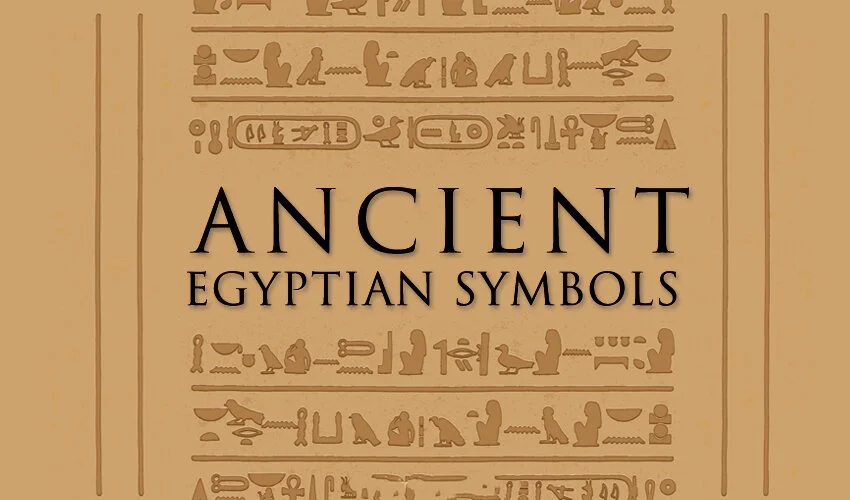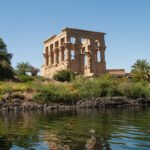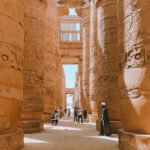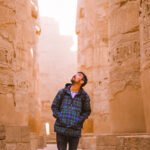In ancient Egypt, symbolism played a vital role in religion, art, and daily life, where each Ancient Egypt Symbols carried profound meanings tied to the divine and the cosmos.
Egyptian symbols served as powerful tools of communication, reflecting the beliefs, spiritual values, and rituals of the time. They were not merely decorative elements but were imbued with significance, influencing everything from royal ceremonies to the journey of the soul in the afterlife.
The vast array of ancient Egyptian symbols—from the Ankh representing life to the Eye of Horus symbolizing protection—helped connect the physical and spiritual worlds.
These symbols were deeply intertwined with the Egyptian gods, the concept of eternity, and the cycle of life and death. Many of these sacred images were engraved in tombs, temples, amulets, and statues, offering protection, guidance, and divine favor.
Exploring the rich tapestry of symbols from ancient Egypt offers a window into the culture’s intricate relationship with the unseen world. Whether through the imagery of powerful gods or the timeless concept of eternal life, these symbols continue to fascinate and resonate with modern-day readers and travelers.
Check Our Tours Egypt Travel Packages
| Symbol | Meaning | Significance |
|---|
| Ankh | Life, protection, faith, energy, light | Associated with the goddess Isis, commonly found in tombs and temples, representing life, fertility, and transformation. |
| Eye of Horus | Protection and health | Symbolized healing and protection, often worn as an amulet to ward off evil and offer safety. |
| Eye of Ra | Sun, power, and authority | Represented the sun’s power, connected to Ra, the sun god, and symbolized divine strength. |
| Ouroboros | Cycle of life and rebirth | Depicted as a snake eating its tail, symbolizing the eternal cycle of life, death, and rebirth. |
| Amenta | Land of the Dead | Represented the underworld or afterlife in Egyptian mythology, connected to the journey of the soul. |
| Scarab Symbol | Transformation and resurrection | Represented resurrection, renewal, and protection, frequently used in amulets and jewelry. |
| Djed Pillar | Strength and stability | Symbolized the backbone of Osiris, representing stability, endurance, and the foundation of life. |
| Tyet Symbol | Feminism and protection | Associated with the goddess Isis, linked to life, protection, and feminine power. |
| Symbol of Ka | Soul and spiritual essence | Represented the vital force or spiritual essence of an individual in ancient Egyptian beliefs. |
| Ba Symbol | Physical soul and rebirth | Depicted the personality or spirit, believed to travel between the living world and the afterlife. |
| Feather of Maat | Justice, truth, and morality | Symbolized the concept of balance and truth, used to weigh the souls of the deceased in the afterlife. |
| Deshret Symbol | Lower Egypt and authority | Represented the Red Crown of Lower Egypt, symbolizing control and power over this region. |
| Hedjet Symbol | Upper Egypt and sovereignty | Represented the White Crown of Upper Egypt, symbolizing rule and authority in the region. |
| Pschent Symbol | Unity of Egypt | Combined the Red Crown (Deshret) and White Crown (Hedjet), symbolizing the unification of Upper and Lower Egypt. |
| Shen Symbol | Eternity and divine protection | A circular symbol representing eternity and protection, often associated with gods and goddesses. |
| Uraeus | Power and divine authority | Depicted as a cobra, symbolizing sovereignty, royalty, and divine power, especially for gods and pharaohs. |
| Seba | Stars, gods, or constellations | Represented stars and guided the deceased toward the afterlife, symbolizing divine creation and guidance. |
| Hekha and Nekhakha | Power of kingship | Represented the crook and flail, symbols of leadership, authority, and royal power used by the kings of Egypt. |
| Menat | Prosperity, fertility, and fortune | Worn as a necklace, associated with joy, fertility, and good fortune, often connected to Hathor, the goddess of love and music. |
| Was Scepter | Divine rule and control | Symbolized divine authority and control over chaos, often held by gods and pharaohs to represent their power. |
| Primordial Hill | Creation and origin | Represented the first mound of land that emerged from the waters of chaos, where the god Atum created life. |
| Khepresh | Ceremonial and military power | A blue crown worn by pharaohs during battle or ceremonies, symbolizing military power and divine protection. |
| Tree of Life | Destiny and eternal life | Represented knowledge, enlightenment, and the eternal cycle of life, often associated with the gods’ wisdom and creation. |
| Ieb | Heart and emotions | Symbolized the heart, considered the center of intellect, emotion, and willpower in ancient Egyptian beliefs. |
| Akhet | Horizon and cycle of life | Represented the horizon where the sun rises or sets, symbolizing the cycle of life, death, and rebirth. |
| Atef | Divine authority of Osiris | A crown worn by Osiris, symbolizing his divine authority over the afterlife and the dead. |
| Canopic Jars | Mummification and protection | Used in the mummification process to store the internal organs of the deceased, protecting them in the afterlife. |
| Sesen | Rebirth and creation | Represented the lotus flower, symbolizing the sun, rebirth, and creation, often used in association with the god Ra. |
| Sistrum | Music, joy, and divine harmony | A musical instrument connected to Hathor, symbolizing joy, good fortune, and the harmonious order of the universe. |
| Winged Sun | Solar power and eternity | Symbolized the sun’s power and eternal protection, often placed above temple entrances to offer divine protection. |
Top 20 Ancient Egyptian Symbols and their meanings
1- The Ankh
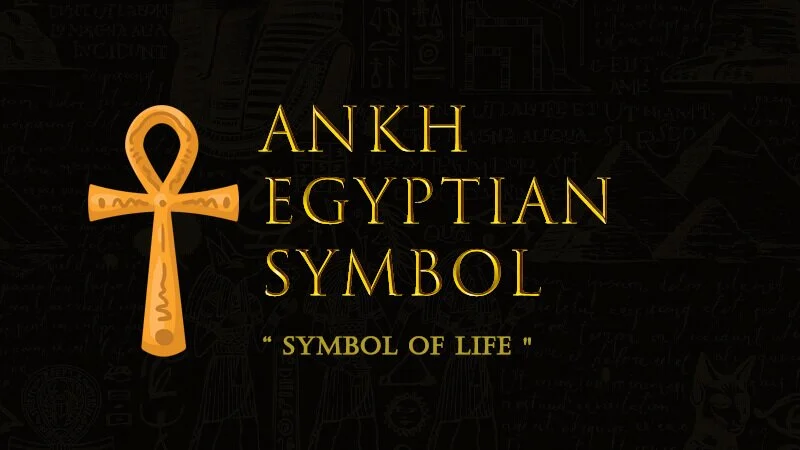
- Meaning: Symbol of life, immortality, and protection.
- Shape: A cross with a loop at the top, representing the connection between the physical and spiritual worlds.
- Association: Linked to gods like Isis and Osiris.
- Usage: Frequently depicted in the hands of gods and pharaohs, offering life and protection.
- Rituals: Used in tombs and burial practices to ensure safe passage to the afterlife.
2- The Djed
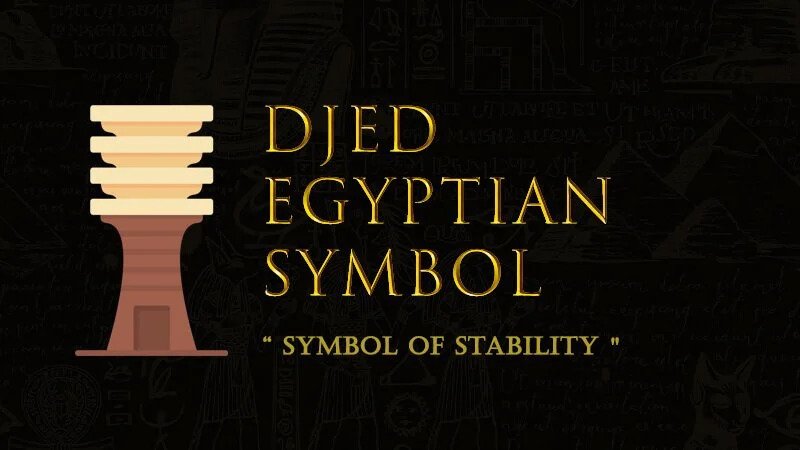
- Meaning: Symbol of stability, strength, and endurance.
- Shape: A pillar with four horizontal bars at the top, representing the backbone of Osiris.
- Association: Linked to the god Osiris, symbolizing his resurrection and eternal life.
- Usage: Often depicted in temple carvings and amulets, used to provide stability and protection.
- Rituals: Played a key role in rituals related to renewal and the afterlife, representing the enduring nature of life and the cosmos.
3- The Was Scepter
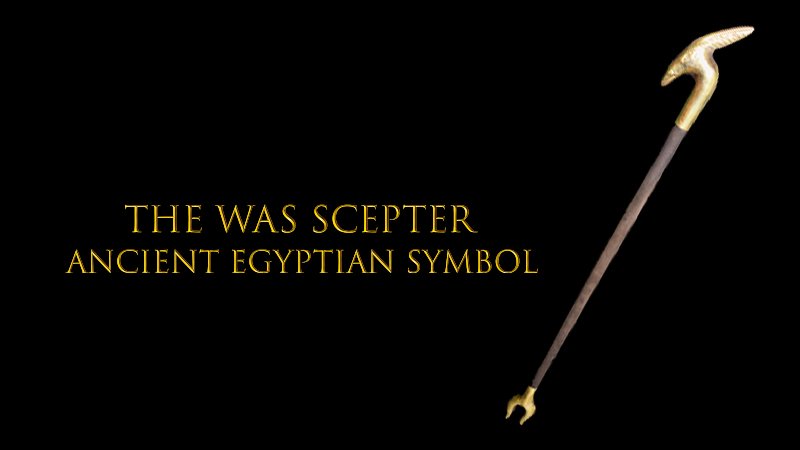
- Meaning: Symbol of power, authority, and control.
- Shape: A long staff with a forked base and an animal head at the top.
- Association: Connected to gods like Anubis and Set, as well as pharaohs, symbolizing their divine rule.
- Usage: Often depicted in the hands of gods and kings, representing their power to govern and maintain order.
- Rituals: Used in religious ceremonies and often placed in tombs to ensure the deceased had power and authority in the afterlife.
4- The Scarab Beetle
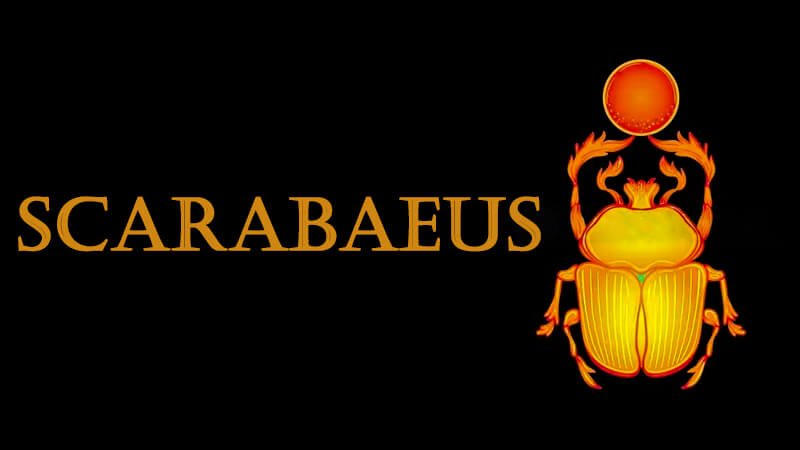
Meaning: Symbol of transformation, rebirth, and protection.
Shape: Depicted as a beetle, representing the dung beetle pushing the sun across the sky.
Association: Linked to the god Khepri, who was associated with the rising sun and renewal.
Usage: Commonly used in amulets and jewelry to provide protection and symbolize rebirth in the afterlife.
Rituals: Scarab amulets were placed with mummies to ensure the soul’s safe journey and renewal in the afterlife.
5- The Tyet
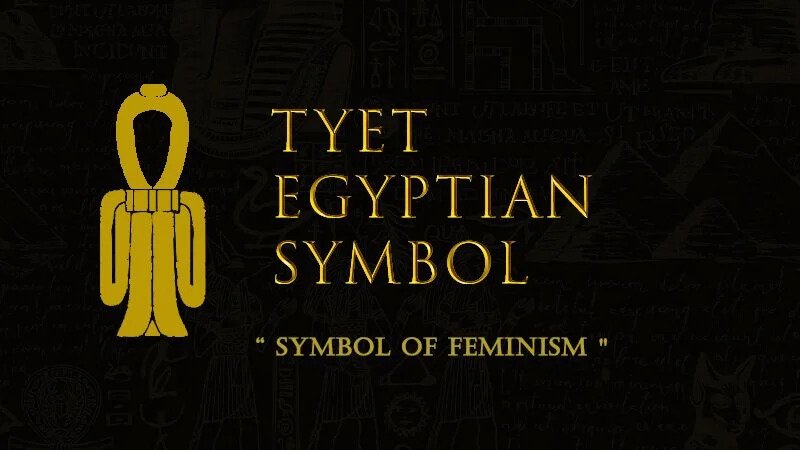
- Meaning: Symbol of protection, life, and femininity.
- Shape: Resembles a knot or a looped strap, often referred to as the “knot of Isis.”
- Association: Closely linked to the goddess Isis, symbolizing her role as a protector of the deceased and life-giver.
- Usage: Frequently found in amulets, jewelry, and funerary objects, intended to offer protection and blessings to the wearer.
- Rituals: Used in various rituals, particularly those related to fertility and the afterlife, reinforcing the connection between life and the goddess’s protective power.
6- The Crook and Flail

- Meaning: Symbols of kingship, authority, and leadership.
- Shape: The crook resembles a shepherd’s staff, while the flail is a tool used for threshing grain.
- Association: Traditionally associated with pharaohs, representing their role as the shepherd of the people and their power to provide for and protect their subjects.
- Usage: Often depicted in the hands of gods and pharaohs in art and inscriptions, signifying their divine authority and ability to maintain order.
- Rituals: Frequently included in royal funerary equipment and ceremonies to ensure the pharaoh’s power in the afterlife and their continued rule over the land.
7- The Shen
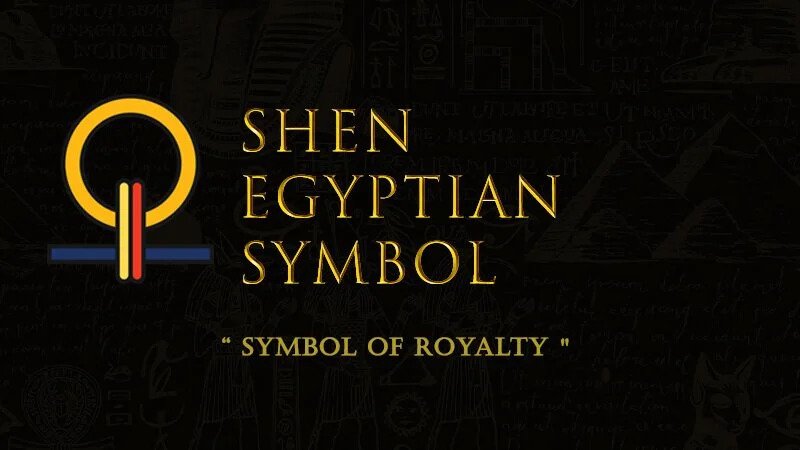
- Meaning: Symbol of perfection, infinity, and protection.
- sociation: The name comes from the Egyptian word for “surround,” reflecting its protective qualities.
- Usage: Shen amulets were commonly worn for safety, and the symbol appears in various artifacts, emphasizing symmetry and completeness.
- Historical Context: Likely developed during the Old Kingdom or 1st Intermediate Period, it gained popularity in the Middle Kingdom and was often depicted with gods like Horus, Nekhbet, and Isis.
8- The Eye of Horus
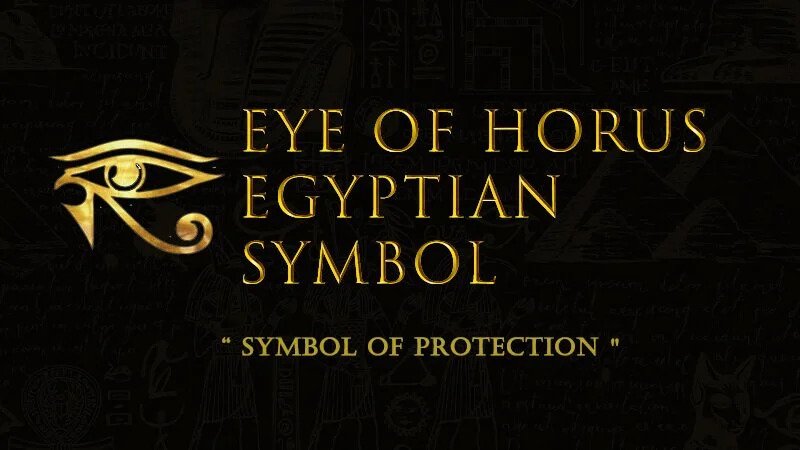
- Meaning: Symbol of protection, health, and restoration.
- Shape: Represents an eye, often depicted with stylized markings.
- Association: Linked to the goddess Wadjet and later associated with Horus and Ra through the Distant Goddess motif.
- Usage: The Eye of Horus was used as an amulet for protection and healing, believed to ward off evil.
- Historical Context: Remained a potent symbol throughout Egyptian history, representing the watchful eye of the gods.
9- The Eye of Ra
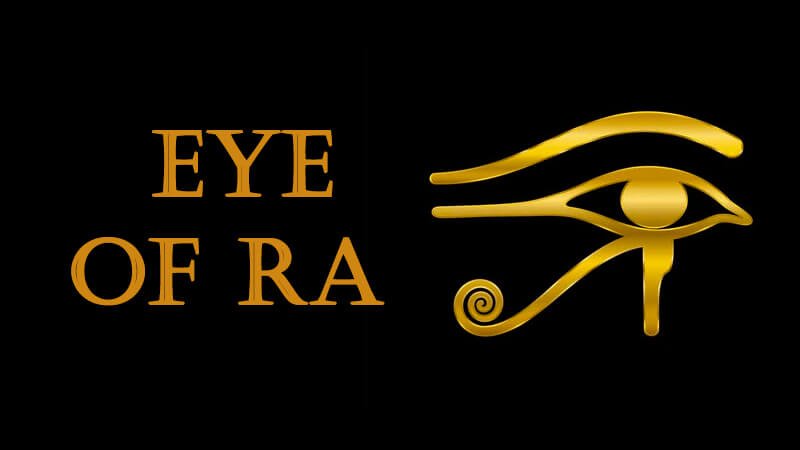
- Meaning: Symbol of power, authority, and the sun.
- Shape: Often depicted as a stylized eye.
- Association: Traditionally associated with the sun god Ra and linked to goddesses like Hathor and Sekhmet.
- Usage: Represents the protective and watchful nature of the sun, often seen in art and amulets.
- Historical Context: Frequently confused with the Eye of Horus, the Eye of Ra emphasizes the connection to the solar power in Egyptian mythology.
10- The Sesen (Lotus Flower)
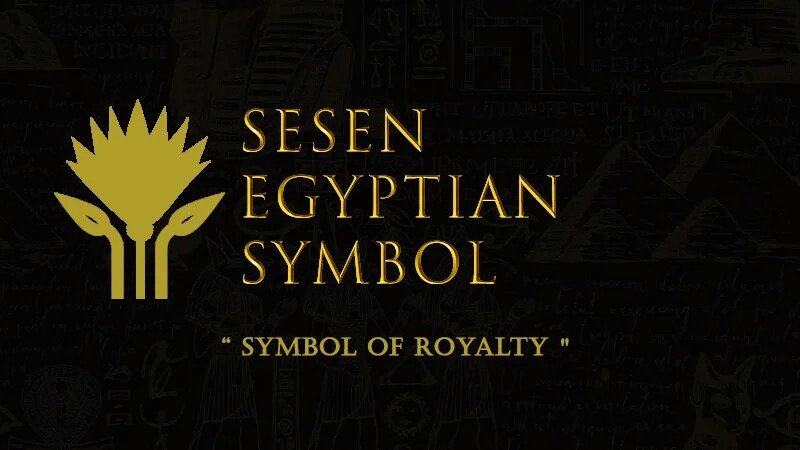
- Meaning: Symbol of life, creation, rebirth, and the sun.
- Shape: Depicted as a blooming lotus flower.
- Association: Linked to the god Osiris and represents renewal due to its cycle of closing at night and blooming at dawn.
- Usage: Frequently seen in art, jewelry, and canopic jars, symbolizing resurrection and life.
- Historical Context: Became especially popular during the Old Kingdom, representing Upper Egypt and often depicted with papyrus, symbolizing Lower Egypt.
11- The Ben-Ben
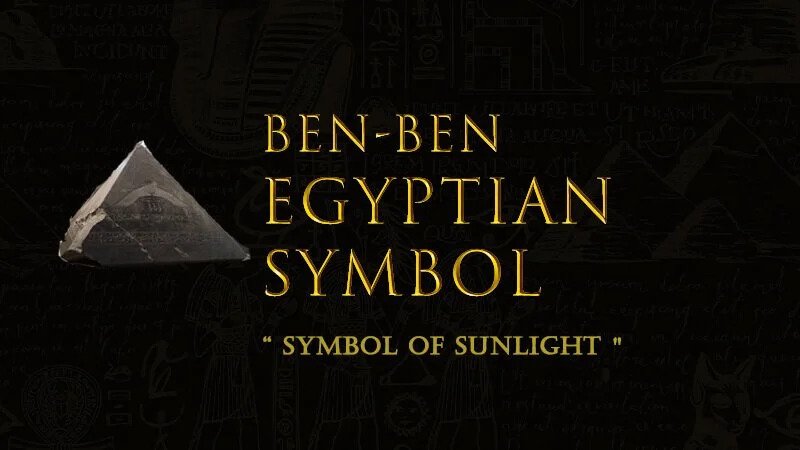
- Meaning: Symbol of creation and eternity.
- Shape: Represents a mound or pyramid, often depicted in an upward-reaching form.
- Association: Connected to the god Atum, who is said to have emerged from the ben-ben at the beginning of creation.
- Usage: Pyramids symbolize the ben-ben, representing the link between earth and heaven.
- Historical Context: Its symbolism dates back to the Early Dynastic Period, gaining prominence during the Old Kingdom and appearing in temple and tomb inscriptions.
12- Ka ancient Egyptian Symbol
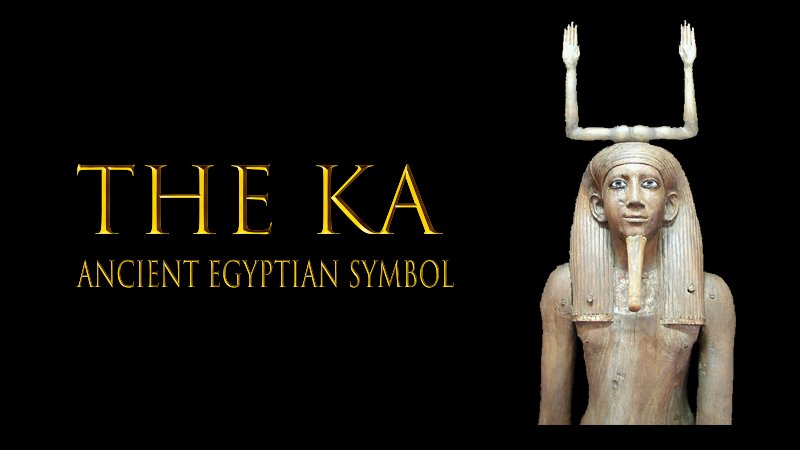
- Meaning: Represents the spirit or soul of a person.
- Shape: Often depicted in hieroglyphs, symbolizing one’s spiritual twin or life force.
- Association: Connected to the idea of vitality and the eternal nature of the soul.
- Usage: Essential in the embalming process to ensure the preservation of the body, as the ka was believed to reside within it.
- Historical Context: Fundamental in ancient Egyptian beliefs about the afterlife, emphasizing the need for a physical vessel to maintain existence after death.
13- Ba ancient Egyptian Symbol
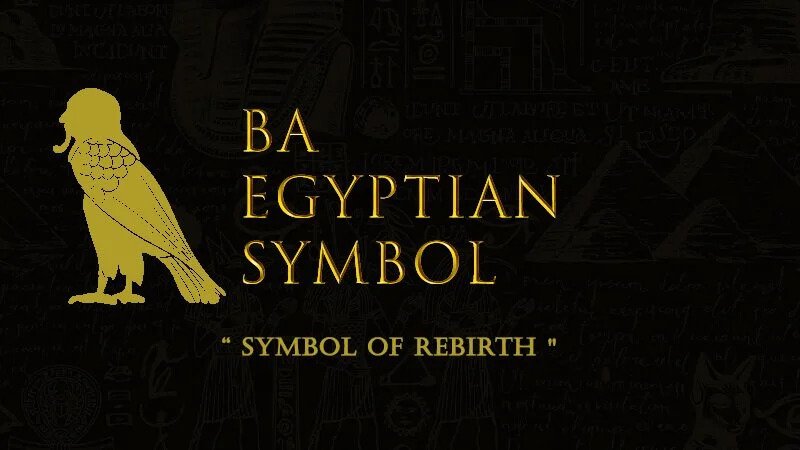
- Meaning: Symbolizes the physical soul and personality.
- Shape: Often depicted as a human-headed bird.
- Association: Represents the aspect of the soul that could travel between the living world and the afterlife.
- Usage: The ba was believed to be able to leave the tomb and visit the living, signifying connection between the two realms.
- Historical Context: Essential in Egyptian funerary practices, as ensuring the ba’s ability to return to the body was crucial for a successful afterlife journey.
14- Feather Maat Egyptian Symbol
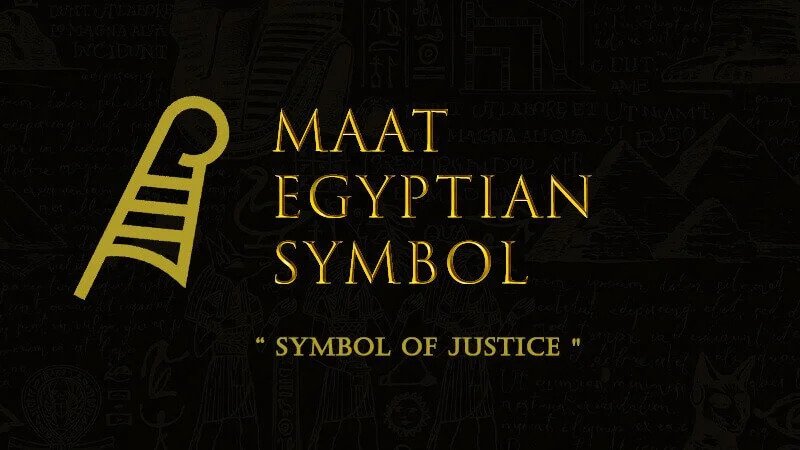
- Meaning: Symbol of truth, justice, and law.
- Shape: An ostrich feather, often worn by the goddess Maat.
- Association: The feather was used in the judgment of the dead. In the afterlife, the deceased’s heart was weighed against the Feather of Maat to determine their fate.
- Usage: If a person’s heart was lighter than the feather, they were deemed worthy of entering the afterlife; otherwise, their soul was condemned.
- Historical Context: This symbol was central to Egyptian beliefs about morality, balance, and the afterlife.
15- Deshret Egyptian Symbol (Red Crown of Lower Egypt)
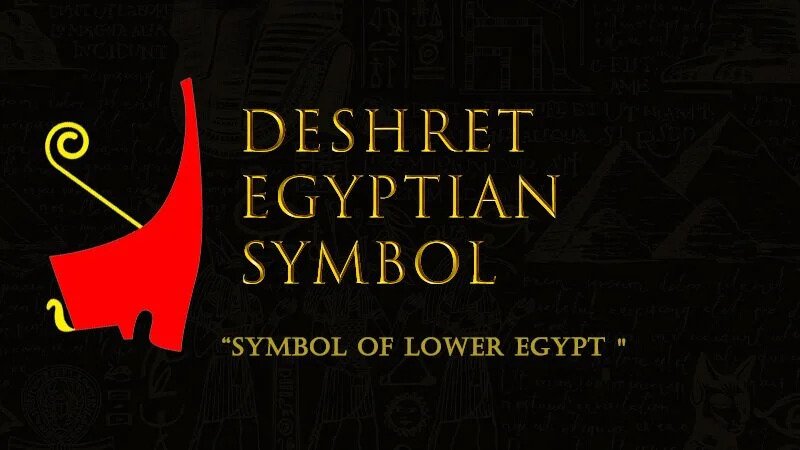
- Meaning: Represents Lower Egypt.
- Shape: A tall, flat, red crown.
- Association: Connected to Wadjet, the goddess of Lower Egypt, and symbolized the fertile land and the unity of Lower Egypt.
- Usage: Worn by pharaohs to symbolize their rule over Lower Egypt.
- Historical Context: Deshret was one of two crowns, later combined with the White Crown of Upper Egypt to form the Pschent.
16- Hedjet Egyptian Symbol (White Crown of Upper Egypt)
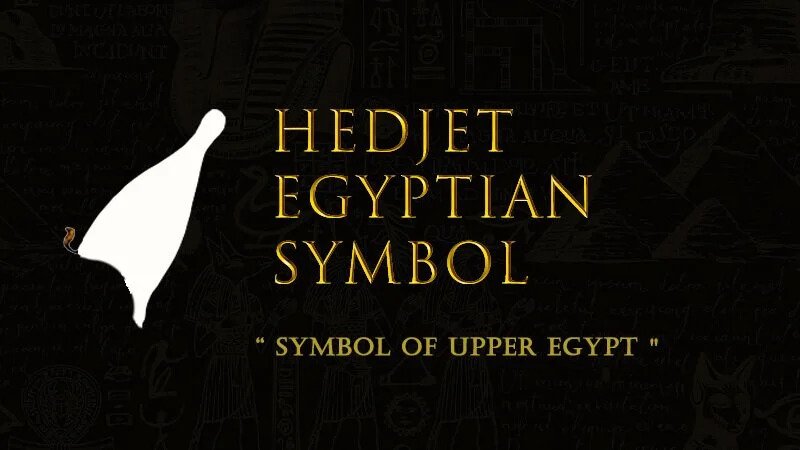
- Meaning: Symbolizes Upper Egypt.
- Shape: A tall, conical white crown.
- Association: Represented pharaoh’s control over Upper Egypt.
- Usage: Worn by rulers of Upper Egypt, and later as part of the Pschent, the double crown of unified Egypt.
- Historical Context: The Hedjet was used during ceremonies and in depictions of the pharaohs ruling over Upper Egypt.
17- Pschent Egyptian Symbol (Double Crown of Egypt)

- Meaning: Symbol of a united Egypt, representing the pharaoh’s rule over both Upper and Lower Egypt.
- Shape: A combination of the Red Crown (Deshret) and the White Crown (Hedjet).
- Association: The Pschent symbolized the unification of Egypt under a single ruler.
- Usage: Worn by pharaohs after the unification of the two lands, representing their dominion over all of Egypt.
- Historical Context: The Pschent became the traditional crown for Egyptian rulers after Egypt was unified.
18- Tree of life Egyptian Symbol
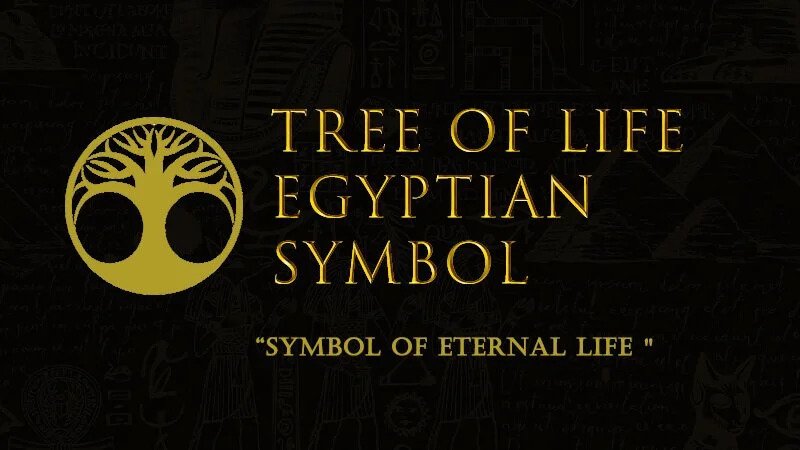
- Meaning: Represents time, wisdom, and the connection between life and death.
- Shape: A stylized tree often depicted with branches and roots.
- Association: Linked to creation myths and the passage of time.
- Usage: Symbolized eternal life and the connection between the physical world and the afterlife.
- Historical Context: Used in religious and funerary art to emphasize the cyclical nature of life and death.
19- Winged Sun Disc
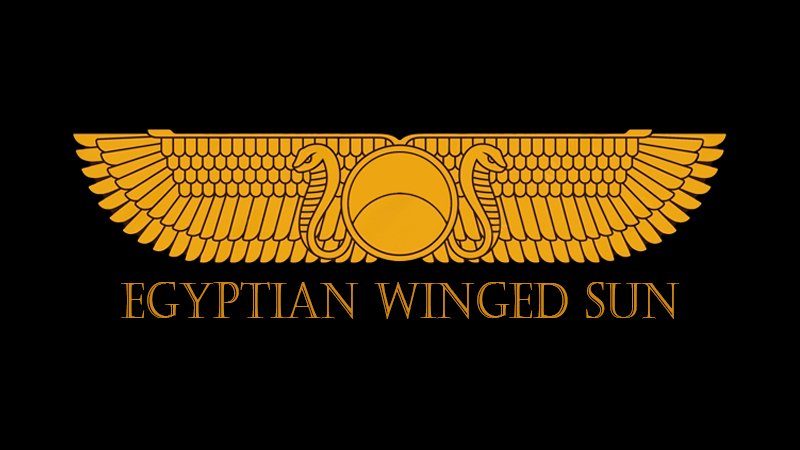
- Meaning: Symbol of divine protection and power.
- Shape: A sun disc flanked by wings.
- Association: Linked to the god Behdety, the midday sun, and used as a protective symbol.
- Usage: Often found in temples and worn as amulets for protection.
- Historical Context: The Winged Sun Disc was a common symbol in Egyptian temples and was also adopted by other cultures.
20- Seba Egyptian Symbol (Star Symbol)
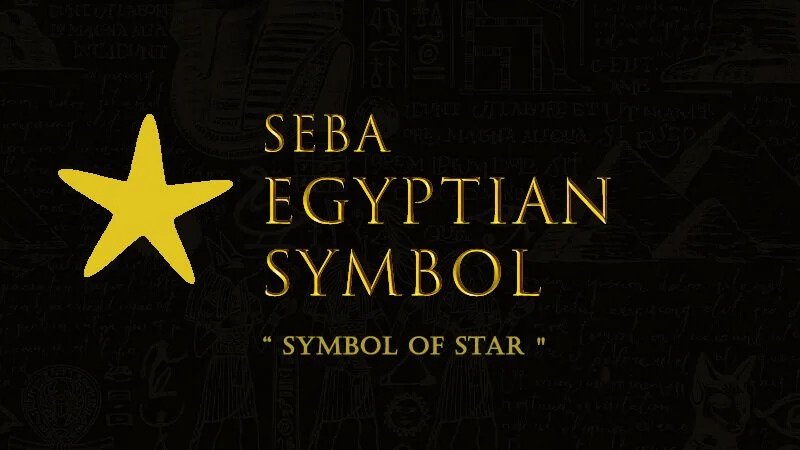
- Meaning: Represents stars and constellations, associated with the afterlife.
- Shape: A star within a circle.
- Association: Linked to Osiris and the Duat (the afterlife).
- Usage: Represented the souls of the dead as stars, often used in funerary texts and decorations.
- Historical Context: Seba was a symbol of guidance and the eternal nature of the soul, commonly used in tombs and temples.
21- Ajet Egyptian Symbol
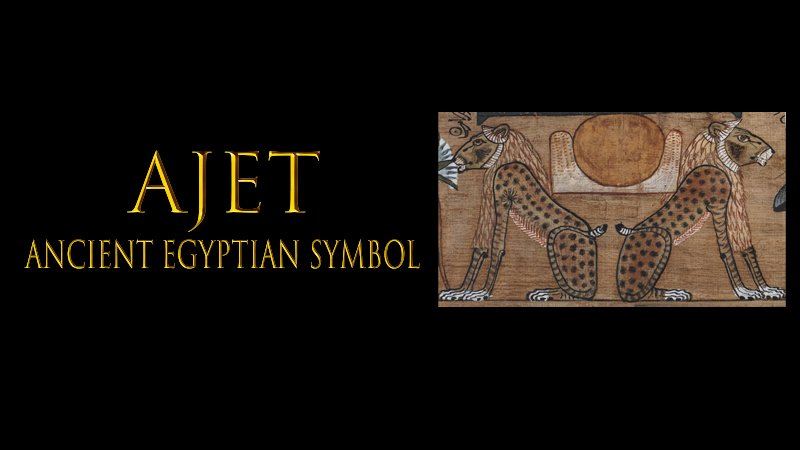
- Meaning: Represents the horizon where the sun rises and sets, symbolizing the cycle of life, death, and rebirth.
- Shape: A sun disc flanked by two mountains, often with a scarab beetle or solar boat in the center.
- Association: Linked to the journey of the sun god Ra, as well as the concept of the afterlife and resurrection.
- Usage: Commonly found in tombs and temples, symbolizing the transition from life to the afterlife and the eternal nature of the soul.
- Historical Context: The Ajet symbol was used throughout ancient Egyptian art and religious texts, representing the meeting point between the earthly world and the divine. It was associated with the daily cycle of the sun and the passage to the afterlife.
22- Amenta Egyptian symbol
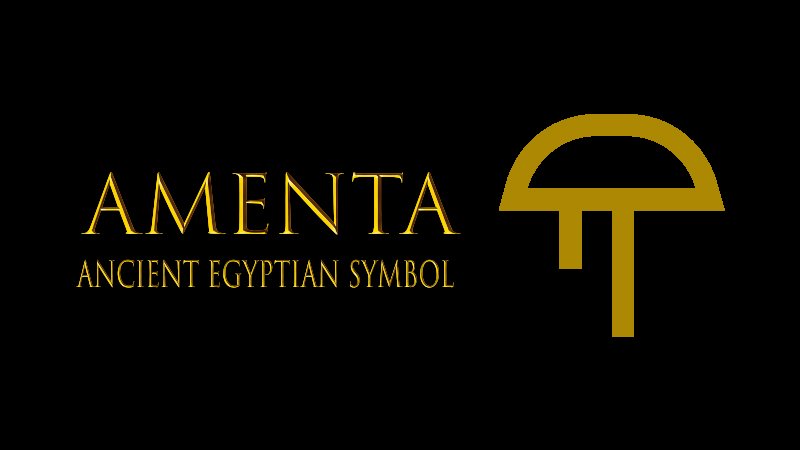
- Meaning: Represents the land of the dead or the underworld in ancient Egyptian mythology.
- Shape: Typically depicted as a horizon with a mountain, symbolizing the west, where the sun sets and where the souls of the dead were believed to journey.
- Association: Linked to the realm of Osiris, the god of the afterlife, and the transition from the earthly life to the afterlife.
- Usage: Commonly found in tombs and funerary texts, symbolizing the entrance to the underworld and the resting place of the dead.
- Historical Context: The Amenta symbol was often associated with the journey of the soul after death and the process of resurrection in the afterlife. It served as a representation of the deceased’s passage into the eternal realm.
23- Blue Crown Egyptian Symbol [Blue Crown (Khepresh) – Egyptian Symbol]

- Meaning: Symbolizes royal power, military strength, and victory in battle.
- Shape: A blue, rounded crown often adorned with golden discs or a uraeus (cobra symbol), worn by pharaohs.
- Association: Worn by pharaohs during ceremonies, battles, and special occasions. It became a symbol of divine kingship and military prowess.
- Usage: Depicted in temple reliefs, statues, and battle scenes, showing the pharaoh leading troops or performing ceremonial duties.
- Historical Context: The Khepresh was popular during the New Kingdom period, especially with warrior pharaohs like Ramses II, who wore it during military campaigns. It signified the ruler’s role as both a divine leader and protector of Egypt.
24- Canopic Jar Egyptian Symbol
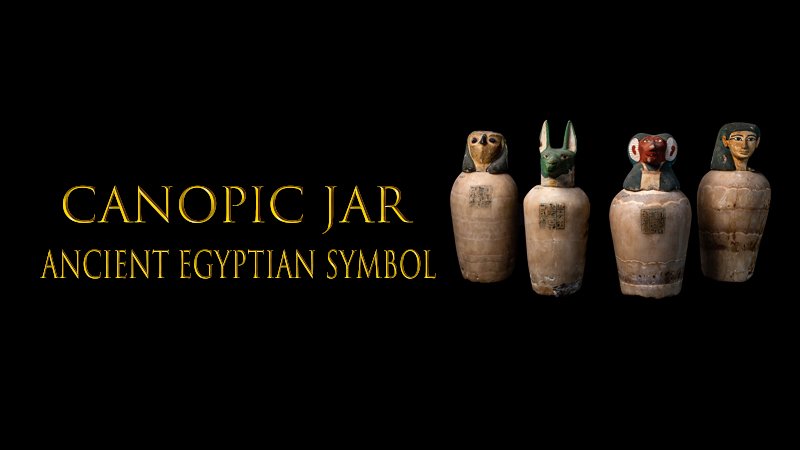
- Meaning: Preservation and protection of vital organs for the afterlife.
- Shape: Lidded jars, each representing one of the four sons of Horus.
- Association: Used during mummification to store the liver, lungs, stomach, and intestines, which were believed to be needed in the afterlife.
- Imsety: Human-headed jar for the liver.
- Hapi: Baboon-headed jar for the lungs.
- Duamutef: Jackal-headed jar for the stomach.
- Qebehsenuef: Falcon-headed jar for the intestines.
- Usage: Placed in tombs alongside the mummy to ensure the deceased’s organs were protected for eternity, helping them navigate the afterlife.
- Historical Context: Canopic jars were commonly used from the Old Kingdom onward, becoming more elaborate during the Middle and New Kingdoms. The jars played a crucial role in ancient Egyptian burial customs.
25- Menet Egyptian Symbol
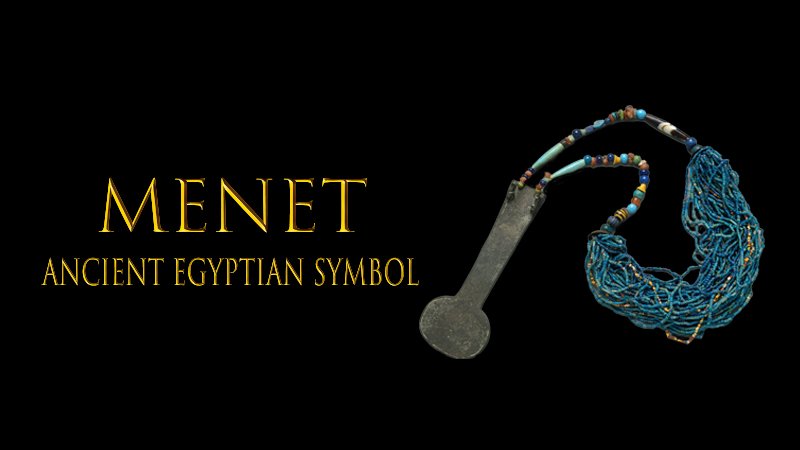
- Meaning: Fertility, joy, prosperity, and good fortune.
- Shape: A heavy necklace with a counterweight, often worn around the neck or carried.
- Association: Linked to the goddess Hathor, who symbolized love, music, fertility, and joy.
- Function: The Menet necklace was used in religious rituals, particularly in offerings and ceremonies dedicated to Hathor. It was believed to bring blessings of fertility and prosperity to the wearer.
- Cultural Significance: In ancient Egypt, the Menet was more than a decorative item. It symbolized abundance and was also associated with rebirth and protection, often appearing in temple carvings and tomb paintings.
26- Ouroboros Egyptian Symbol
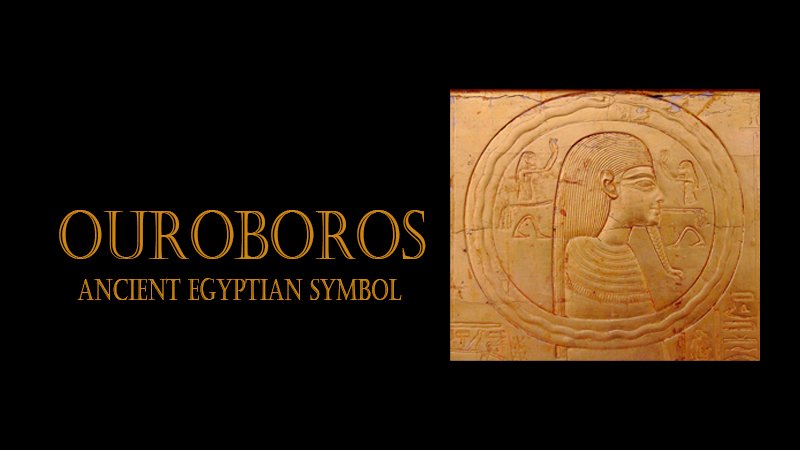
- Meaning: Eternal cycle of life, death, and rebirth.
- Shape: A serpent or snake eating its own tail, forming a continuous circle.
- Association: Linked to both the sun god Ra and the concept of infinity in ancient Egypt.
- Symbolism: The Ouroboros represents the cyclical nature of existence—creation, destruction, and renewal. It signifies the endless cycle of life and the idea that all things are connected in an eternal loop.
- Cultural Significance: Found in Egyptian tombs and religious texts, the Ouroboros symbolized immortality and the constant regeneration of the cosmos. It later became widely used in other cultures as a symbol of unity and wholeness.
27- Bennu bird Egyptian Symbol
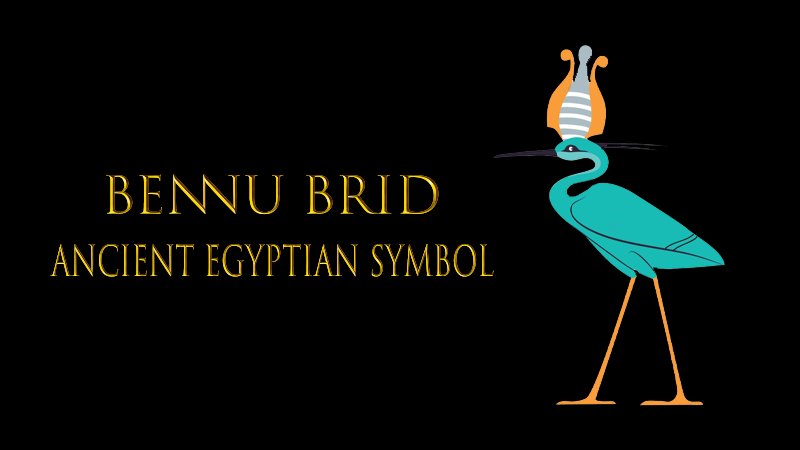
- Meaning: Symbol of rebirth, creation, and the sun.
- Shape: A heron-like bird, often depicted with a tall plume on its head, sometimes standing on a ben-ben stone.
- Association: Linked to the god Ra and Osiris; considered a precursor to the Greek myth of the phoenix.
- Symbolism: The Bennu bird represents the cycle of death and rebirth, aligning with the themes of resurrection and renewal. It was believed to rise from the ashes, symbolizing creation and eternal life.
- Cultural Significance: In ancient Egyptian mythology, the Bennu bird was associated with the moment of creation and was thought to help in guiding the souls of the deceased toward rebirth in the afterlife. It was often connected to the sun god Ra, embodying the daily cycle of the sun’s rising and setting.
28- The Crescent “Symbol of the Moon, Motherhood & Fertility”
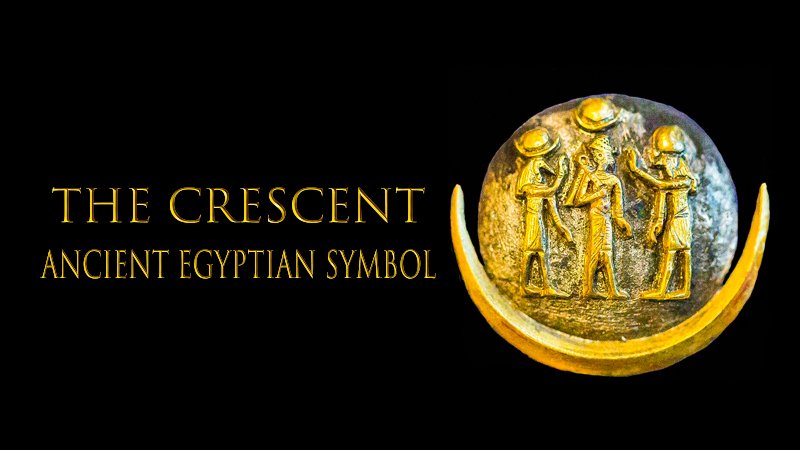
- Meaning: Represents the moon, femininity, motherhood, and fertility.
- Shape: A crescent moon, often depicted with a curved shape symbolizing the waxing and waning phases of the lunar cycle.
- Association: Linked to the goddess Isis and other mother goddesses in Egyptian mythology, symbolizing nurturing, protection, and the cycles of life.
- Symbolism: The crescent moon is closely tied to the concepts of fertility, pregnancy, and the nurturing nature of motherhood. Its connection to the lunar cycle represents the cycles of birth, life, and rebirth.
- Cultural Significance: In ancient Egypt, the crescent was revered for its connection to Isis, the mother goddess, embodying feminine power and protection. The moon’s changing phases were seen as a reflection of the rhythms of life, making the crescent a potent symbol of renewal and continuity.
29- The Uraeus Egyptian Symbol
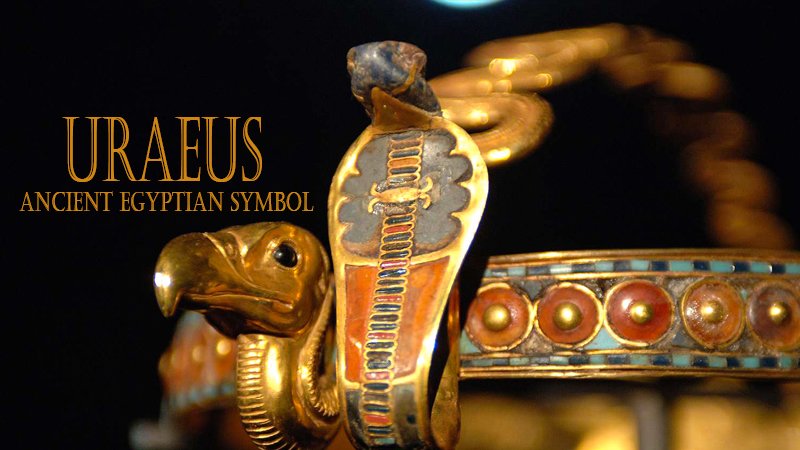
- Meaning: Represents sovereignty, royalty, and divine authority.
- Shape: A stylized cobra, often depicted rearing up with its hood expanded.
- Association: Linked to several deities, particularly Wadjet, the goddess of Lower Egypt, and often worn by pharaohs as a symbol of their power and protection.
- Symbolism: The Uraeus symbolizes the protective nature of the cobra, which was believed to ward off evil and enemies. It embodies the idea of divine kingship and the pharaoh’s role as a protector of the land and its people.
- Cultural Significance: The Uraeus was prominently featured in royal regalia, crowns, and headdresses. It represented the pharaoh’s connection to the gods and was often depicted in art and hieroglyphics, signifying the ruler’s authority and responsibility to maintain Ma’at (order and justice) in the kingdom.
30- Maat Egyptian Symbol
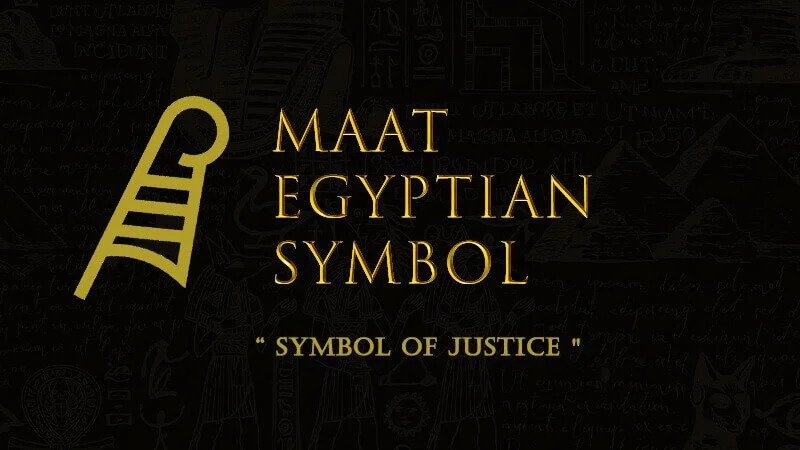
- Meaning: Represents truth, justice, order, and harmony.
- Shape: Often symbolized by an ostrich feather, which is a key element in the judgment of souls in the afterlife.
- Association: Linked to the goddess Maat, who personifies these concepts and is often depicted as a woman wearing an ostrich feather on her head.
- Symbolism: Maat embodies the essential balance of the universe, governing both the natural world and human society. Her feather is used in the weighing of the heart ceremony, where the heart of the deceased is weighed against the feather to determine their fate in the afterlife.
- Cultural Significance: Maat was central to ancient Egyptian philosophy and ethics, influencing legal systems and societal norms. The pursuit of Maat was seen as essential for maintaining order and preventing chaos, and it was deeply integrated into the governance of the pharaoh, who was expected to uphold Maat in their rule.


